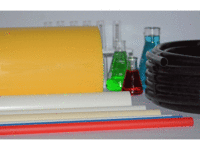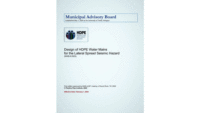Safe Piping Matters published a new report on firestopping of pipe penetrations. This research-based report includes insights from experts that will help protect the lives of building occupants and first responders. Here’s how one firestopping expert summarizes the challenge: “…There is quite a lengthy list of items which can result in problems with the installation of firestopping materials,” she warns. “…Any one of these items can contribute to a two-hour wall being reduced to a four-minute wall.”
This report explains how firestop failures in the event of a fire can trigger fiascos that put people at risk, while raising serious questions and liability for architects, engineers, and construction professionals. The industry must ensure these critical components meet the highest standards for safety.
Safe Piping Matters reviews issues related to firestopping assemblies for various plastic piping materials including polyvinyl chloride (PVC), chlorinated polyvinyl chloride (CPVC), polyethylene (PE), and crosslinked polyethylene (PEX) plastic, as well as non-combustible piping materials such as copper, iron, and steel. Key concepts include:
- How pipe combustibility impacts firestopping requirements;
- Why complexity is the main challenge of firestopping;
- Comparisons of typical firestop assemblies;
- Common problems to avoid; and
- Recommendations to improve safety and reduce liability
“Designing and installing firestop assemblies for piping penetrations requires a demanding process. Teams must understand which code requirements apply to their situation, select appropriate components, and install them correctly,” said Paul Hagar, Executive Director of Safe Piping Matters. “This valuable report features experts who address critical firestopping issues that occur throughout the construction process and gives recommendations to make buildings safer.”
To view the report, visit https://safepipingmatters.org/firestopping-pipe


